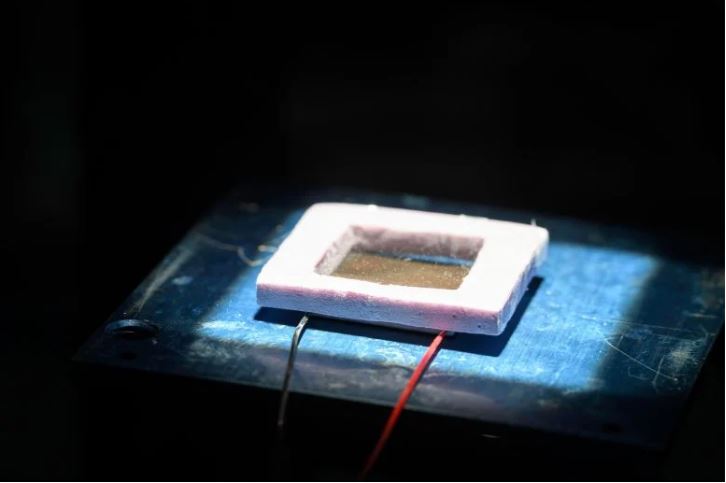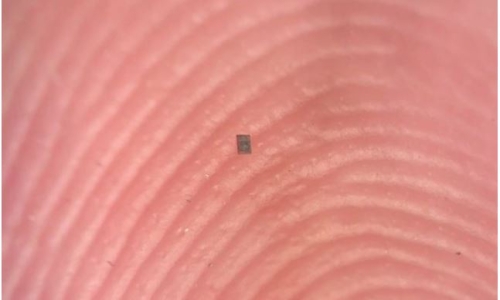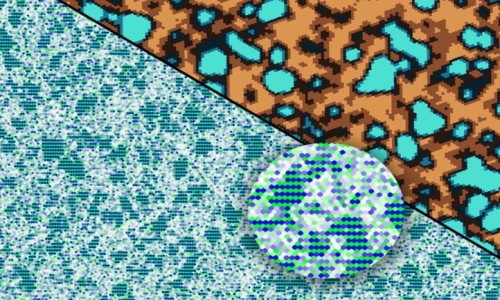


 11:24:24
11:24:24  2025-08-17
2025-08-17  1163
1163

Researchers seeking greater energy independence have explored solar thermoelectric generators (STEGs) as a potential way to produce solar electricity. Unlike the photovoltaic cells found in most solar panels, STEGs can capture various forms of thermal energy as well as direct sunlight. These devices consist of a hot side and a cold side separated by semiconductor materials, and the temperature difference between them generates electricity through the Seebeck effect.
However, widespread use of STEGs has been limited by their low efficiency. At present, most models convert less than 1 percent of incoming sunlight into electricity, far below the roughly 20 percent conversion rate achieved by standard residential solar panels.
Innovative approach at the University of Rochester
That gap in efficiency was dramatically reduced through new techniques developed by researchers at the University of Rochester’s Institute of Optics. In a study published in Light: Science and Applications, the team described their unique spectral engineering and thermal management methods to create a STEG device that generates 15 times more power than previous devices.
“For decades, the research community has been focusing on improving the semiconductor materials used in STEGs and has made modest gains in overall efficiency,” says Chunlei Guo, a professor of optics and of physics and a senior scientist at Rochester’s Laboratory for Laser Energetics. “In this study, we don’t even touch the semiconductor materials—instead, we focused on the hot and the cold sides of the device instead. By combining better solar energy absorption and heat trapping at the hot side with better heat dissipation at the cold side, we made an astonishing improvement in efficiency.”
Three strategies for efficiency gains
The team designed the new high-efficiency STEGs using three main strategies. For the hot side of the device, they applied a specialized black metal technology developed in Guo’s lab, which modified ordinary tungsten to selectively absorb light at solar wavelengths. By using intense femtosecond laser pulses to etch nanoscale structures into the metal’s surface, they increased its ability to capture energy from sunlight while limiting heat loss at other wavelengths.
Second, the researchers “covered the black metal with a piece of plastic to make a mini greenhouse, just like on a farm,” says Guo. “You can minimize the convection and conduction to trap more heat, increasing the temperature on the hot side.”
Lastly, on the cold side of the STEG, they once again used femtosecond laser pulses, but this time on regular aluminum, to create a heat sink with tiny structures that improved the heat dissipation through both radiation and convection. That process doubles the cooling performance of a typical aluminum heat dissipator.
In the study, Guo and his research team provided a simple demonstration of how their STEGS can be used to power LEDs much more effectively than the current methods. Guo says the technology could also be used to power wireless sensors for the Internet of Things, fuel wearable devices, or serve as off-grid renewable energy systems in rural areas.
Reality Of Islam |
|

A tiny robo

By applying

Stanford, C

A new study
 9:3:43
9:3:43
 2018-11-05
2018-11-05
10 benefits of Marriage in Islam
 7:5:22
7:5:22
 2019-04-08
2019-04-08
benefits of reciting surat yunus, hud &
 9:45:7
9:45:7
 2018-12-24
2018-12-24
advantages & disadvantages of divorce
 11:35:12
11:35:12
 2018-06-10
2018-06-10
 6:0:51
6:0:51
 2018-10-16
2018-10-16
al-hussain (peace be upon him)
 10:18:1
10:18:1
 2022-09-21
2022-09-21
 5:57:34
5:57:34
 2023-03-18
2023-03-18
 8:19:41
8:19:41
 2018-06-21
2018-06-21
 7:26:19
7:26:19
 2022-04-08
2022-04-08
 7:45:39
7:45:39
 2018-06-21
2018-06-21
 1:16:44
1:16:44
 2018-05-14
2018-05-14
 2:42:26
2:42:26
 2023-02-02
2023-02-02
 5:41:46
5:41:46
 2023-03-18
2023-03-18
| LATEST |